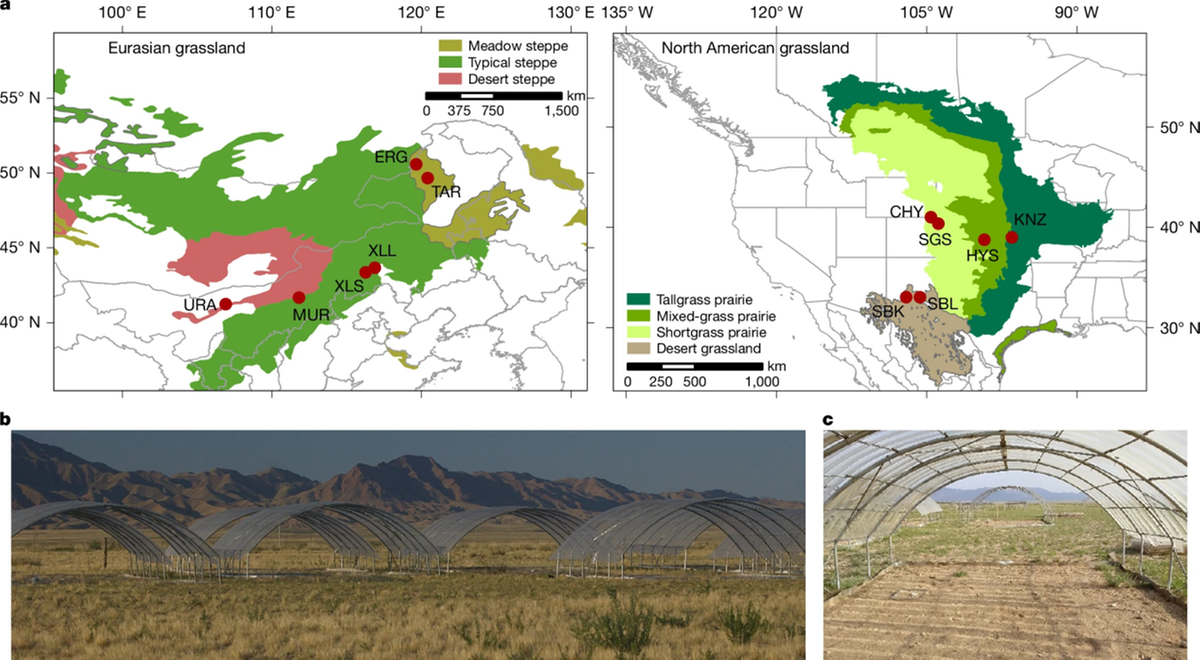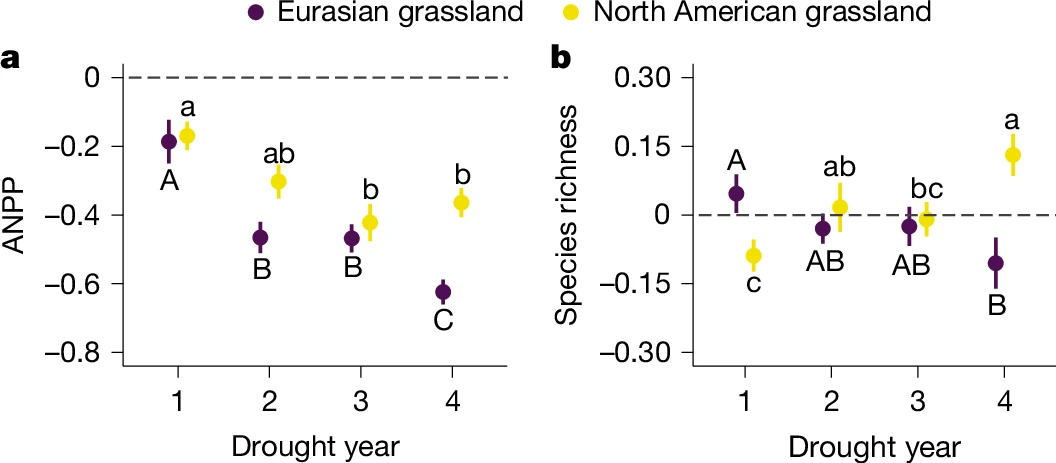
Extreme drought in grasslands experiment. [Photo provided to chinadaily.com.cn]
A groundbreaking study led by Chinese scientists has uncovered divergent drought survival strategies in Eurasian and North American grasslands, offering critical insights for ecosystem management amid climate change. The research, titled "Contrasting Drought Sensitivity of Eurasian and North American Grasslands", was published in Nature on Jan 29, 2025. It was conducted by Professor Yu Qiang from Beijing Forestry University alongside Colorado State University and 18 other institutions across three nations.
Grassland ecosystems, covering around 40 percent of the Earth's surface, are highly sensitive to changes in precipitation. Extreme droughts typically reduce productivity in these ecosystems, thereby diminishing nature's contributions to human well-being. However, the extent to which this negative effect varies among grassland types and over time in response to multi-year extreme drought remains unclear. To address this, the research team selected two of the largest grass-dominated biomes in the Northern Hemisphere—the Eurasian steppe and North American grasslands—and established six representative monitoring stations across regions such as Inner Mongolia, Xizang autonomous regions in China, and the Midwest of the United States. They then simulated an extreme drought scenario with a 66 percent reduction in summer rainfall over four consecutive years.

Effects of four years of extreme drought on plant productivity and richness. [Photo provided to chinadaily.com.cn]
"We found that drought significantly reduced aboveground plant productivity in Eurasian grasslands, with effects accumulating over time. In contrast, North American grasslands experienced less severe and more muted declines, and we demonstrate the key role of subordinate species in the change," said Yu Qiang.
The study found that the impact of drought on species richness shifted from positive to negative in Eurasian grasslands, but from negative to positive in North American grasslands over time. The differing responses of plant production in these grasslands crucially hinged on inconspicuous non-dominant species—those with smaller populations and lesser ecological influence within the ecosystems. Thus, management strategies that increase and maintain plant diversity, particularly focusing on subordinate species, may enhance grassland resistance to extreme drought events under climate change.
To be more specific, the productivity of Eurasian grasslands and those with lower species richness appears to be more responsive to prolonged extreme droughts owing to the decline of subordinate species while North American grasslands are more stable in their response.
These findings shed light on how grassland ecosystems will respond in the future to prolonged drought, and is essential to improve forecasts of their stability and resilience under climate change, providing critical guidance for mitigating the impact of climate change on grasslands and advancing conservation strategies to safeguard these vital ecosystems.
Professor Yu Qiang from the School of Grassland Science, Beijing Forestry University is the first author of the paper, Professor Han Xingguo from the School of Life Sciences, Hebei University, and Professor Melinda Smith from Colorado State University serve as the corresponding authors, and Professor Dong Shikui and PhD Gu Qian from the School of Grassland Science, Beijing Forestry University are co-authors.